Just as ancient hanging gardens transformed Babylon into a wonder of the world, you’ll discover how strategic plant placement can revolutionize your living space. You’re about to explore ten innovative ways to incorporate live plants that serve dual purposes: enhancing your home’s aesthetic while providing practical benefits like air purification, space division, and even fresh herbs for cooking. These expert-tested solutions will transform your rooms into functional, living environments that work as hard as they look beautiful.
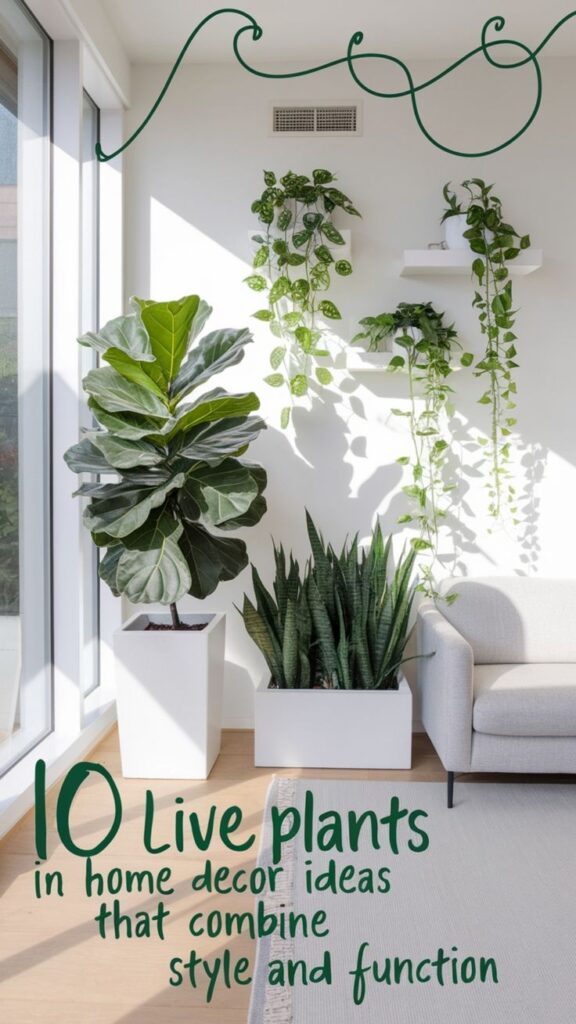
Contents
- 1 Floor-to-Ceiling Statement Plants: Creating Natural Room Dividers
- 2 Living Wall Gardens: Vertical Green Solutions for Small Spaces
- 3 Hanging Plant Compositions: Maximizing Overhead Space
- 4 Air-Purifying Plant Stations in High-Traffic Areas
- 5 Desert Garden Clusters: Low-Maintenance Succulent Displays
- 6 Kitchen Herb Gardens: Blending Decor With Culinary Function
- 7 Bathroom Oasis: Humidity-Loving Plants for Spa Vibes
- 8 Shelf-Styling With Trailing Plants and Vines
- 9 Home Office Plant Corners: Productivity-Boosting Greenery
- 10 Window-Side Plant Collections: Light-Loving Display Gardens
Floor-to-Ceiling Statement Plants: Creating Natural Room Dividers
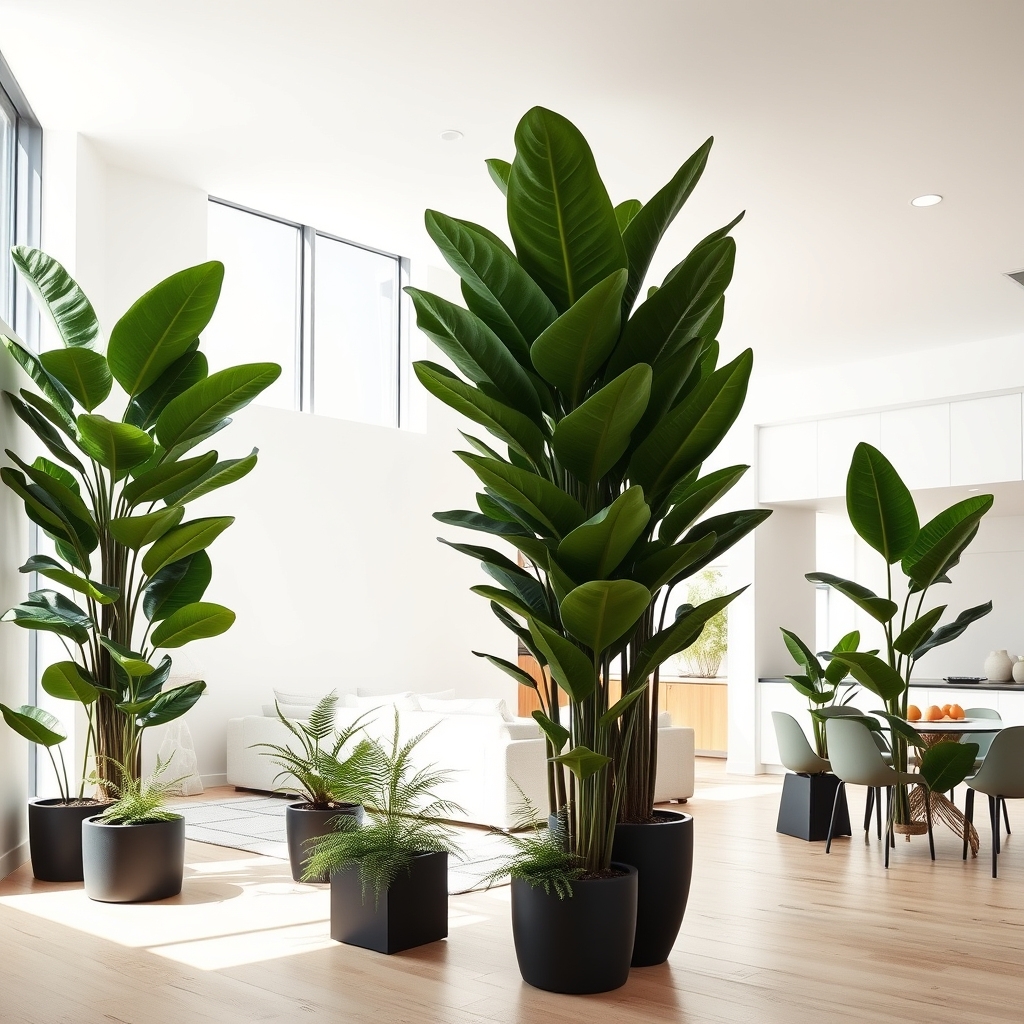
Floor-to-ceiling statement plants serve as natural room dividers by utilizing tall, architectural plants that reach from floor level toward the ceiling, creating organic partitions within open spaces.
These living dividers typically feature specimens like Birds of Paradise, Fiddle Leaf Fig trees, tall Dracaenas, or clusters of bamboo arranged strategically to define separate areas while maintaining visual flow.
The unique feature of these natural dividers lies in their dual functionality: they act as both space separators and dramatic focal points, offering privacy without the permanence of solid walls.
Plants are often positioned in sleek floor planters or decorative containers, arranged in linear formations or grouped compositions to establish clear boundaries between living areas, entryways, or workspaces while purifying the air and adding lush, vertical greenery to the interior landscape.
Living Wall Gardens: Vertical Green Solutions for Small Spaces
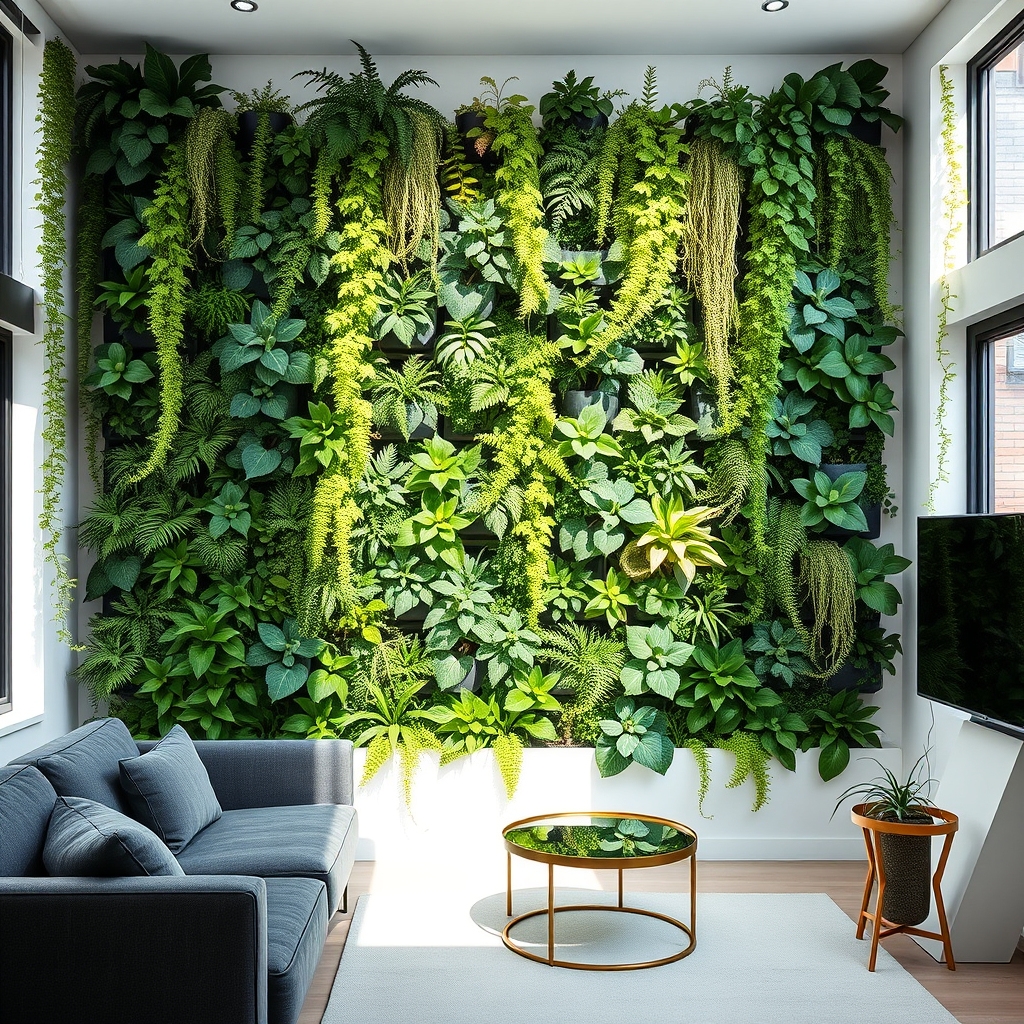
Living Wall Gardens are vertical installations where plants grow directly on walls or mounted panels, transforming ordinary vertical surfaces into lush, living tapestries of foliage.
These green walls typically feature a mix of different plant species arranged in patterns or natural-looking clusters, creating a three-dimensional garden effect that grows upward instead of outward.
The system consists of modular panels or pocket planters attached to a framework that includes irrigation and drainage systems.
Plants are strategically placed in growing medium-filled compartments, allowing roots to develop while securing the plants in their vertical position.
Common plant choices include ferns, succulents, air plants, and trailing vines that can thrive in vertical conditions.
Unique features:
- Space-efficient design that maximizes growing area in limited floor space
- Built-in irrigation systems that maintain plant health
- Modular construction allowing for easy maintenance and plant replacement
- Natural air purification and humidity control
- Acoustic benefits through sound absorption
- Customizable patterns and designs to match interior aesthetics
Hanging Plant Compositions: Maximizing Overhead Space
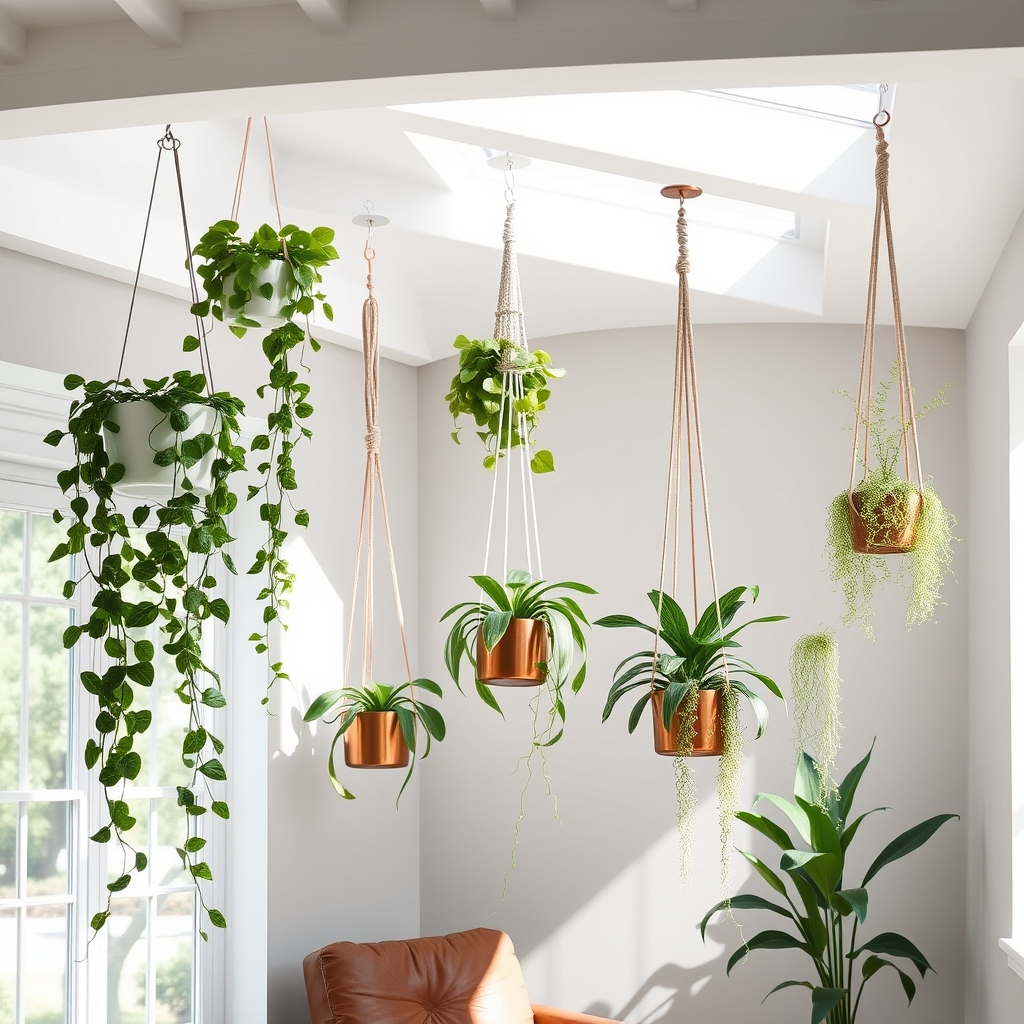
Suspended plant arrangements transform unused ceiling areas into living, vertical gardens. Multiple plants hang at varied heights using macramé holders, decorative chains, or ceiling-mounted hooks, creating dynamic layers of greenery.
Common configurations include clustered arrangements around windows, staggered formations in corners, or linear displays along beams.
The distinctive feature of these compositions is their ability to draw the eye upward while preserving floor space. Plants like pothos, spider plants, and string of pearls cascade downward, forming natural curtains of foliage.
When properly spaced, these arrangements allow air circulation and natural light distribution while adding depth and dimension to rooms with high ceilings.
Practical tip: Install plants at different heights (6-24 inches apart) to prevent overcrowding and ensure each plant receives adequate light. Choose lightweight containers to reduce ceiling stress.
Air-Purifying Plant Stations in High-Traffic Areas
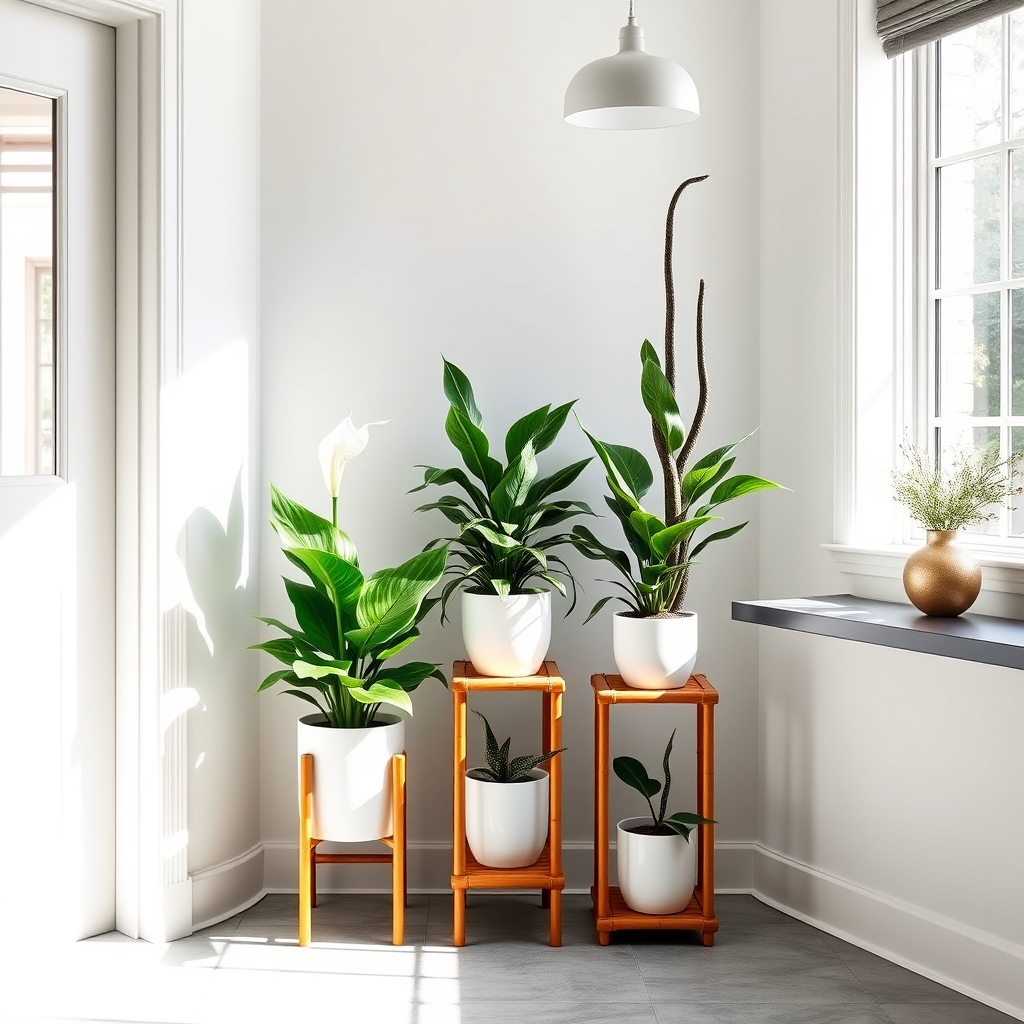
Air-purifying plant stations in high-traffic areas combine functional air cleaning with strategic interior design placement. These setups typically feature clusters of proven air-filtering plants like snake plants, spider plants, or peace lilies arranged on tiered stands, wall-mounted shelves, or dedicated plant corners where household movement is greatest.
The stations often incorporate multiple plants at varying heights, creating visual interest while maximizing air purification capacity. A distinctive feature of these stations is their intentional positioning near sources of indoor pollutants, such as entranceways, living rooms, or home offices.
The plants are typically arranged with adequate spacing to ensure optimal air circulation and include proper drainage systems to prevent water damage in these busy areas. Some stations integrate decorative elements like natural wood stands, ceramic pots in coordinating colors, or ambient lighting to enhance their aesthetic appeal while maintaining their primary air-cleaning function.
Desert Garden Clusters: Low-Maintenance Succulent Displays

Desert Garden Clusters combine multiple succulent varieties in groupings that mimic natural desert landscapes, creating visually striking yet low-maintenance displays.
These arrangements typically feature different sizes, shapes, and colors of succulents, from rosette-forming echeverias to tall, cylindrical cacti, planted in shallow containers with well-draining soil. The clusters often incorporate decorative elements like small rocks, pebbles, or sand to enhance the desert aesthetic.
The unique feature of these displays is their ability to thrive with minimal care while providing year-round visual interest through varying textures, heights, and natural geometric patterns.
Succulents store water in their thick leaves and stems, allowing them to survive extended periods without watering, making them ideal for busy homeowners or those new to plant care.
Kitchen Herb Gardens: Blending Decor With Culinary Function
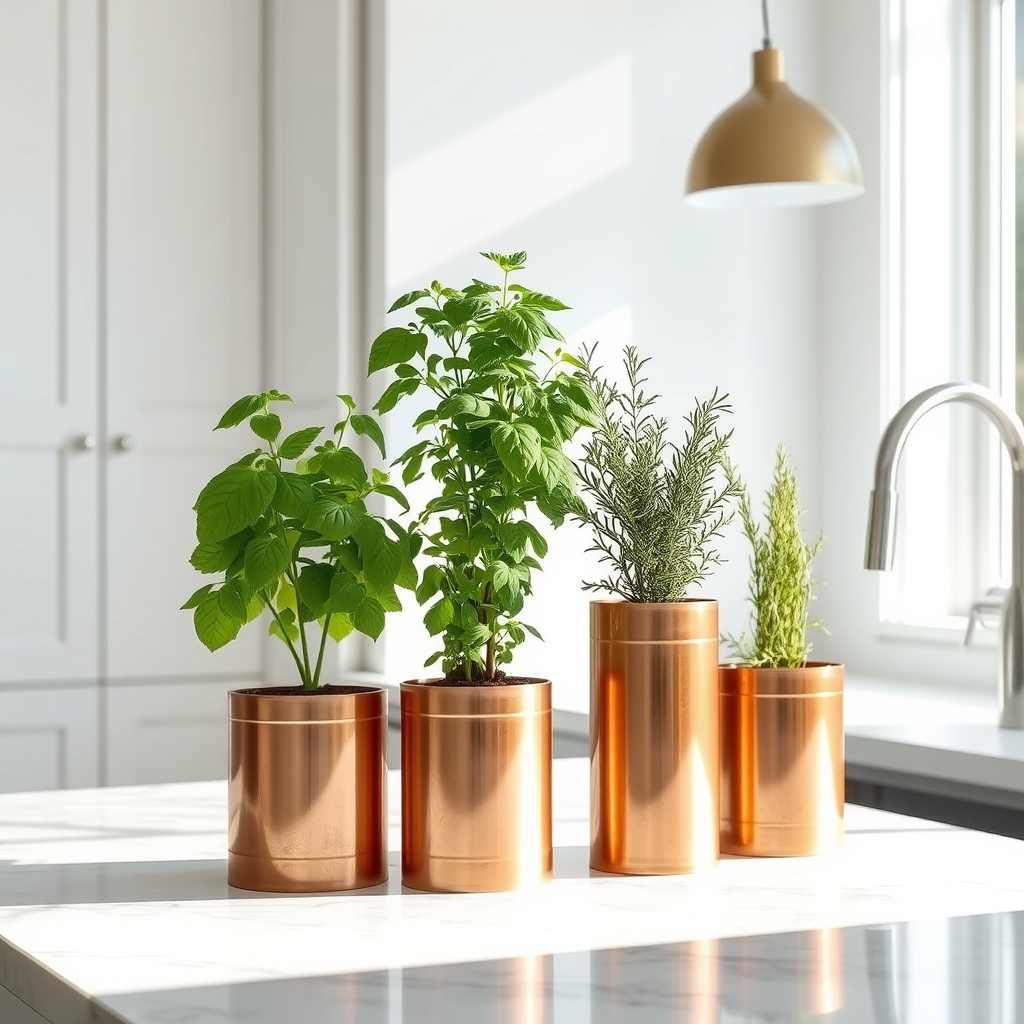
Kitchen herb gardens seamlessly combine decorative appeal with practical functionality, featuring small collections of fresh culinary herbs displayed in attractive containers. These living arrangements typically include popular cooking herbs like basil, thyme, rosemary, and mint, arranged in windowsills, on countertops, or mounted on walls using specially designed planters.
The distinctive feature of kitchen herb gardens is their dual-purpose nature: they serve as natural decor elements while providing fresh ingredients within arm’s reach during meal preparation. Plants are often housed in coordinated pots, vintage containers, or modern vertical systems that complement the kitchen’s aesthetic.
The varied textures and shades of green foliage create visual interest, while the herbs release pleasant aromas that naturally freshen the space.
Many setups incorporate grow lights or are positioned near natural light sources to ensure plant health. Some designs feature tiered stands, hanging planters, or magnetic wall systems to maximize space efficiency in smaller kitchens while maintaining an organized, intentional appearance.
Bathroom Oasis: Humidity-Loving Plants for Spa Vibes
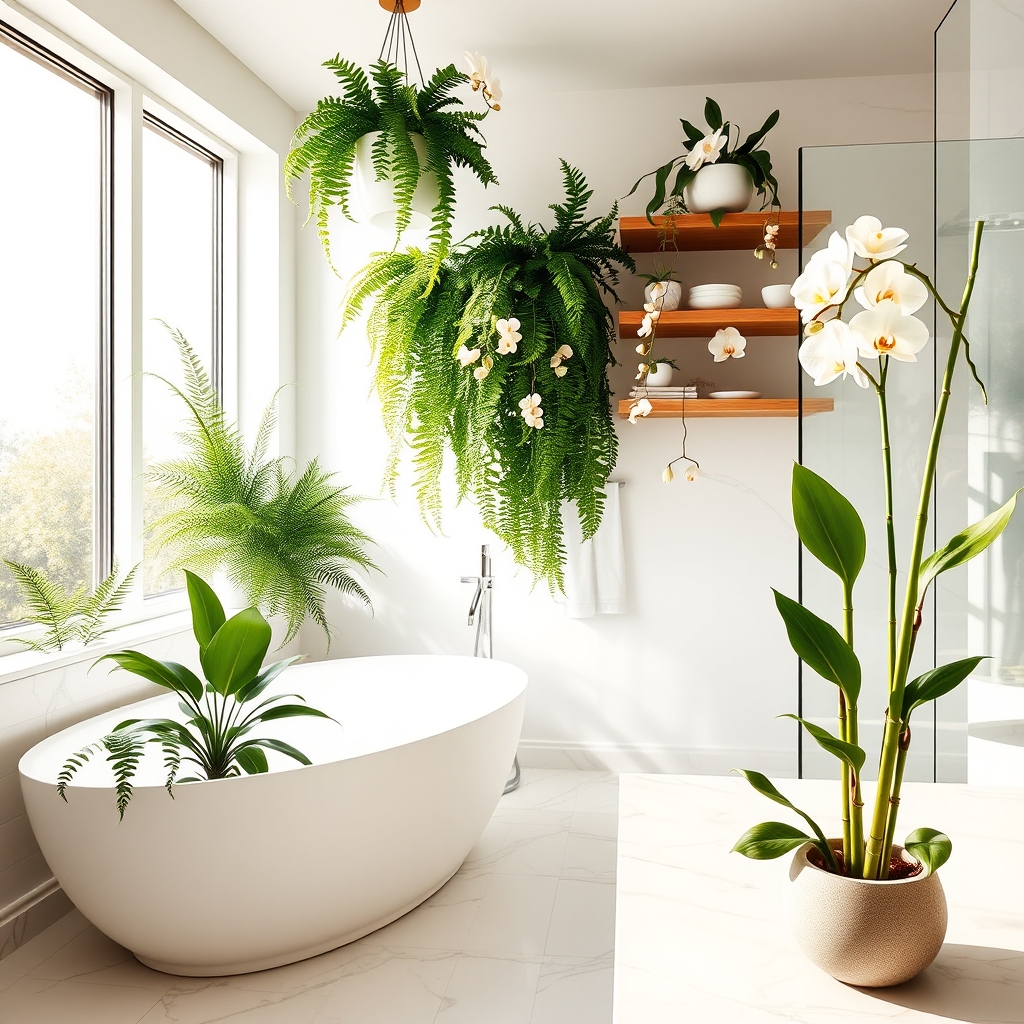
Bathroom Oasis: Humidity-Loving Plants for Spa Vibes creates a luxurious, spa-like atmosphere by incorporating moisture-loving plants that thrive in the naturally humid bathroom environment.
Plants are strategically placed on windowsills, countertops, and hanging planters, capitalizing on the steam from showers and baths. Common selections include Boston ferns, orchids, peace lilies, and bamboo, which add lush greenery while naturally filtering the air.
The combination of steam, natural light, and verdant foliage transforms an ordinary bathroom into a tranquil retreat reminiscent of high-end spa facilities. This design approach serves both aesthetic and practical purposes, as these plants naturally reduce bathroom humidity while creating an organic, calming space.
Shelf-Styling With Trailing Plants and Vines
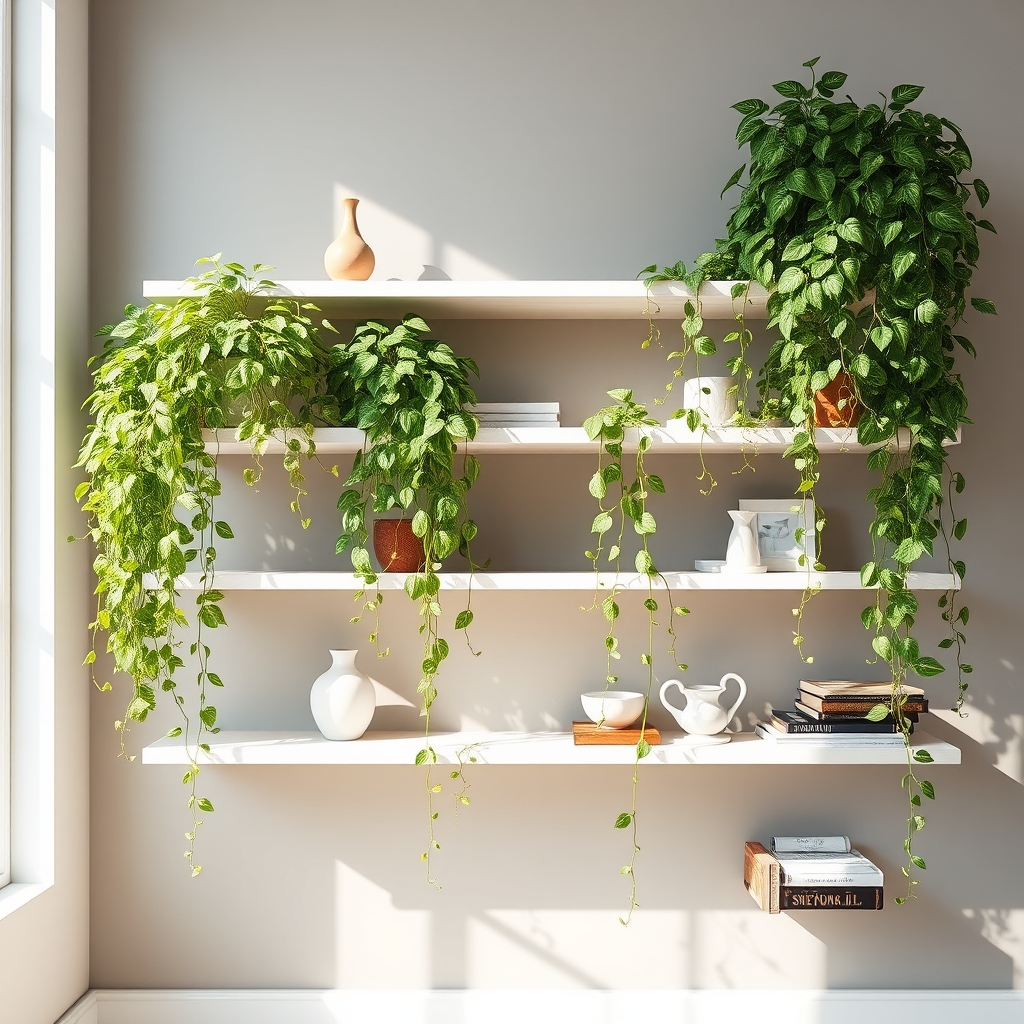
Shelf-styling with trailing plants and vines creates a cascading, organic display where leafy tendrils gracefully spill over shelf edges, softening hard architectural lines.
Plants like Pothos, String of Pearls, or English Ivy are positioned on upper shelves, allowing their foliage to naturally drape downward, creating living curtains of greenery.
This arrangement adds visual movement and depth to shelf displays while maximizing vertical space. The trailing effect works particularly well on floating shelves, bookcases, or wall-mounted units, where the dangling vines can frame artwork, books, or decorative objects beneath them.
The natural downward growth pattern of these plants creates an effortless, jungle-like aesthetic that transforms ordinary shelving into a dynamic, three-dimensional display.
Home Office Plant Corners: Productivity-Boosting Greenery
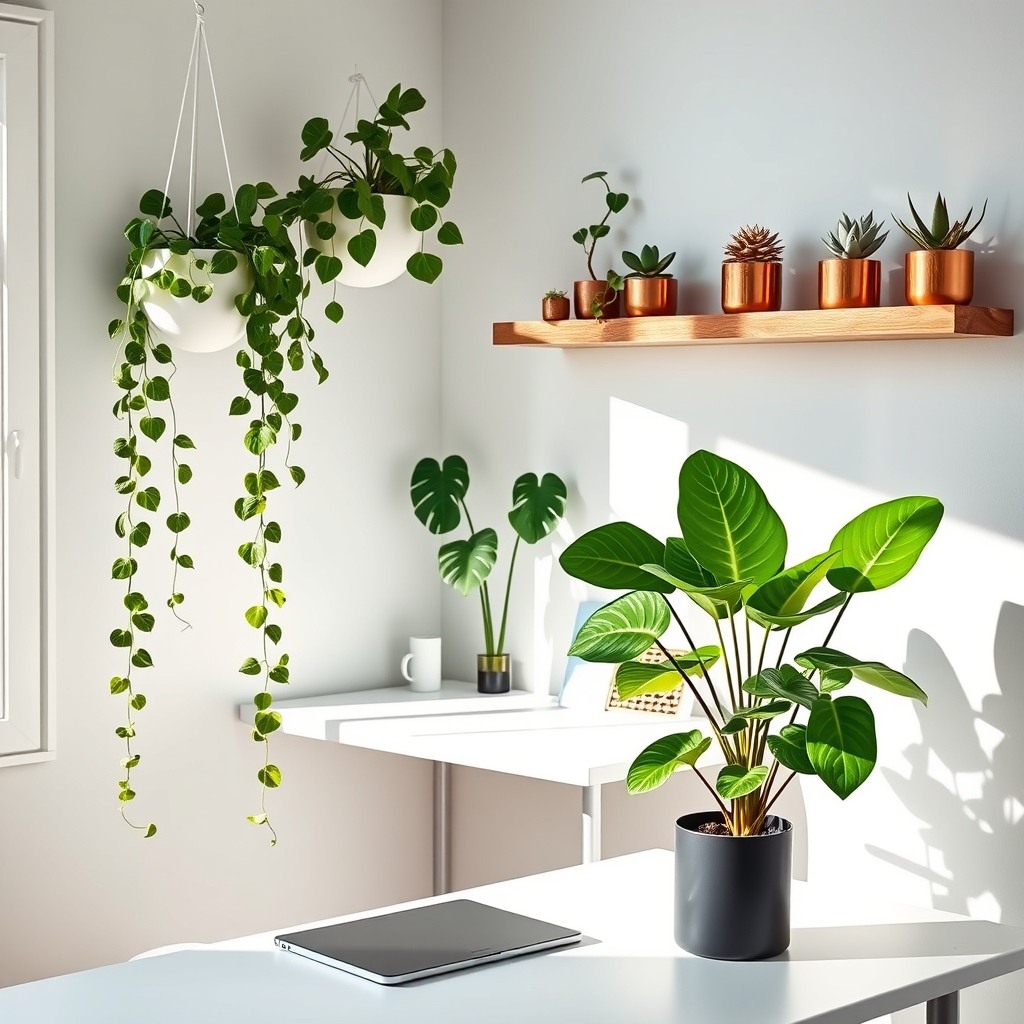
Home office plant corners transform workspaces into vibrant, nature-inspired environments by strategically placing live plants in designated areas.
These green spaces typically feature a mix of floor plants, desk plants, and hanging varieties arranged in clusters or graduated heights. Plants commonly found in these setups include peace lilies, snake plants, and pothos, selected for their air-purifying qualities and low maintenance needs.
The unique feature of home office plant corners lies in their dual functionality: they serve as both aesthetic elements and natural productivity enhancers. The greenery helps reduce stress, improve air quality, and increase focus while working.
These corners often incorporate plant stands, floating shelves, or window sills to maximize vertical space and create visual interest without cluttering the workspace.
Essential elements include:
- Multi-level plant displays
- Mix of plant sizes and textures
- Good natural lighting placement
- Easy-care plant varieties
- Coordinated planters or pots
- Adequate spacing for growth and maintenance
Window-Side Plant Collections: Light-Loving Display Gardens

Window-Side Plant Collections: Light-Loving Display Gardens transform ordinary windowsills and adjacent spaces into vibrant, living displays that maximize natural light exposure.
These arrangements typically feature graduated heights of plants, with shorter varieties like succulents and herbs placed closest to the window, medium-height plants like pothos or peace lilies in the middle, and taller specimens such as fiddle leaf figs positioned slightly back from the window.
The setup often incorporates various display elements such as floating shelves, tiered plant stands, or hanging planters to create visual interest at different levels.
Plant selections focus on light-loving species that thrive in bright conditions, creating a natural transition between indoor and outdoor spaces.
Key features include:
- Strategic placement utilizing natural light gradients
- Mix of container styles and heights
- Emphasis on plants that need high light exposure
- Combination of trailing and upright growth patterns
- Integration with window treatments and existing architecture
